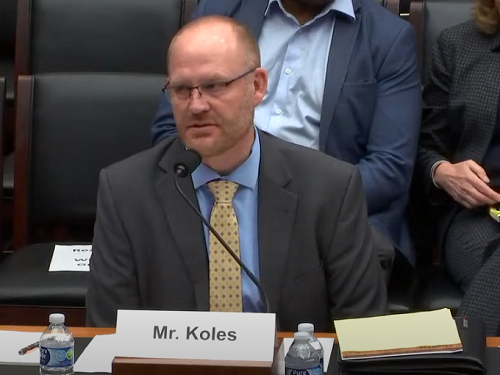The Subcommittee on Highways and Transit within the House of Representatives Transportation and Infrastructure Committee held a hearing on March 21 that focused on rural interstate and transit programs and the challenges they face.
[Above image via House T&I committee]
“Our rural communities are essential to the connectivity of the nation, and a robust transportation network of rural highways and roads ensures that people and goods can freely move across the country,” noted Rep. Rick Crawford (R-AR), the subcommittee’s chairman, in his opening remarks – describing rural communities as the “backbone of America” as much of the food and fuel consumed by the country’s residents is produced in or travels through rural areas of the nation.
“These communities vary in shape and size, and have vastly different infrastructure needs than their urban counterparts,” he said. “They also often lack sufficient resources and capacity to make necessary improvements to infrastructure.”
Witnesses at the hearing included Mike Koles, executive director of the Wisconsin Towns Association, on behalf of the National Association of Towns and Townships; Jeff Greteman, president of Windstar Lines, on behalf of the American Bus Association; Todd Morrow, executive director of Island Transit, on behalf of the Community Transportation Association of America; and Scott VanderWal, national vice president of the American Farm Bureau Federation.

Koles described the road system in America as a “human circulatory system” in his remarks, noting that “the nation’s interstate system forms our heart, [with] state highways functioning as the transportation system’s arteries and veins. And, like the human circulatory system, our local roads form the critical and vast majority of our capillaries that serve as the first and last mile of our economy.”
Yet he also stressed that “our capillaries have been neglected and are sick, and that sickness hinders our national economy and endangers our safety.”
As a result, Koles offered suggestions for improving that situation, including: Adjusting Surface Transportation Block Grant Program or STBGP to target truly rural areas and first mile roads that service the fields, forests, farms, and quarries that feed the nation and provide building materials; Expanding the use of STBGP that allow states to allocate up to 15 percent of funds dedicated to adjusted census-defined areas that have a population of 50,000 or lower either “rural minor collector” or “local” roadway projects; Increasing funds for the federal bridge program and create a carve-out to include off-system non-state structures less than 20 feet, and; Creating a more “stable, consistent, and enhanced funding stream” to support rural road and bridge maintenance and construction projects.
Meanwhile, Morrow outlined the growing transit needs of rural communities. “One of the challenges of rural transit is that destinations are farther apart requiring long routes, all in areas with low population density,” he explained. “But transportation in rural areas is just as important as transit in big cities. [Yet] in rural areas, long routes increase the cost of bus service.”

He noted availability of transit vehicles, both small and large, is a growing problem. “We are experiencing a bus manufacturing shortage and supply chain issues,” Morrow said. “Vehicle prices, particularly for the small vehicles that rural systems depend on, have dramatically increased, creating another challenge. This manufacturing shortage also impacts large buses, particularly hydrogen [powered] vehicles.”
Another issue is one increasingly common among state departments of transportation as well: A labor shortage. “Recruitment, as for most employers these days, is a significant challenge for my transit agency,” Morrow pointed out. “We have been able to cost-effectively implement service increases, but we chronically lack drivers.”
He said there are two places where the federal government could make changes that would assist transit provider recruitment efforts.
“One is to fast-track the certification of labs for required drug and alcohol testing,” Morrow noted. “Another area is the requirements for a Commercial Driver’s License (CDL). We need an addition to the CDL passenger endorsement that is focused on bus driving and public transit. Additionally, there needs to be a way to consider learning disabilities and language differences in the [CDL] testing.”



